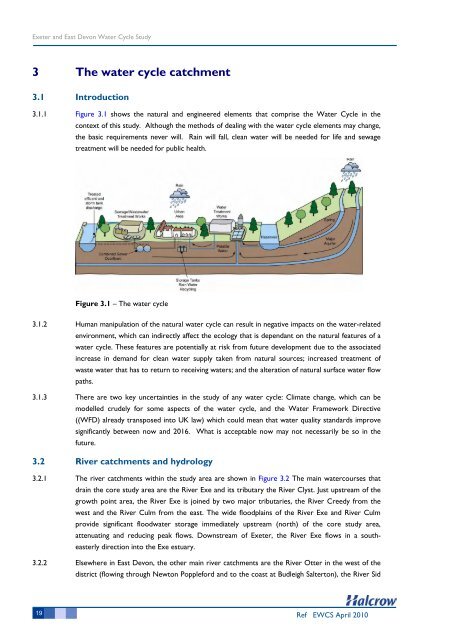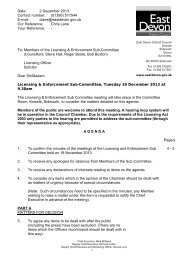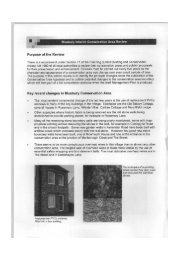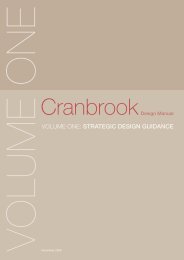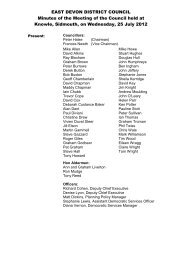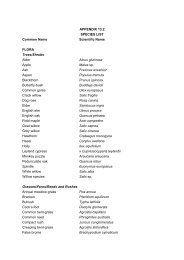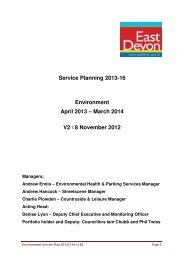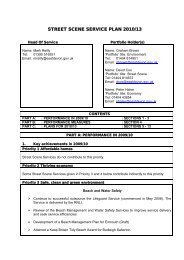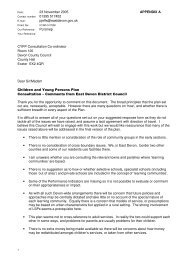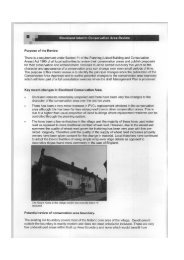Water Cycle Study - East Devon District Council
Water Cycle Study - East Devon District Council
Water Cycle Study - East Devon District Council
Create successful ePaper yourself
Turn your PDF publications into a flip-book with our unique Google optimized e-Paper software.
Exeter and <strong>East</strong> <strong>Devon</strong> <strong>Water</strong> <strong>Cycle</strong> <strong>Study</strong><br />
3 The water cycle catchment<br />
3.1 Introduction<br />
3.1.1 Figure 3.1 shows the natural and engineered elements that comprise the <strong>Water</strong> <strong>Cycle</strong> in the<br />
context of this study. Although the methods of dealing with the water cycle elements may change,<br />
the basic requirements never will. Rain will fall, clean water will be needed for life and sewage<br />
treatment will be needed for public health.<br />
Figure 3.1 – The water cycle<br />
3.1.2 Human manipulation of the natural water cycle can result in negative impacts on the water-related<br />
environment, which can indirectly affect the ecology that is dependant on the natural features of a<br />
water cycle. These features are potentially at risk from future development due to the associated<br />
increase in demand for clean water supply taken from natural sources; increased treatment of<br />
waste water that has to return to receiving waters; and the alteration of natural surface water flow<br />
paths.<br />
3.1.3 There are two key uncertainties in the study of any water cycle: Climate change, which can be<br />
modelled crudely for some aspects of the water cycle, and the <strong>Water</strong> Framework Directive<br />
((WFD) already transposed into UK law) which could mean that water quality standards improve<br />
significantly between now and 2016. What is acceptable now may not necessarily be so in the<br />
future.<br />
3.2 River catchments and hydrology<br />
3.2.1 The river catchments within the study area are shown in Figure 3.2 The main watercourses that<br />
drain the core study area are the River Exe and its tributary the River Clyst. Just upstream of the<br />
growth point area, the River Exe is joined by two major tributaries, the River Creedy from the<br />
west and the River Culm from the east. The wide floodplains of the River Exe and River Culm<br />
provide significant floodwater storage immediately upstream (north) of the core study area,<br />
attenuating and reducing peak flows. Downstream of Exeter, the River Exe flows in a southeasterly<br />
direction into the Exe estuary.<br />
3.2.2 Elsewhere in <strong>East</strong> <strong>Devon</strong>, the other main river catchments are the River Otter in the west of the<br />
district (flowing through Newton Poppleford and to the coast at Budleigh Salterton), the River Sid<br />
19 Ref EWCS April 2010


